The first groups to stay on the Island were the Casemateers. These were local youth clubs who rented out one of the Casemates, hence the name. They paid rent, which was the first income for the Drake’s Island Committee, but also helped out with clearing the Island. The earliest I can find that the Casemates were rented out was in 1963 which makes sense as that was the year that the National Trust was granted the lease for the Adventure Centre on the Island.
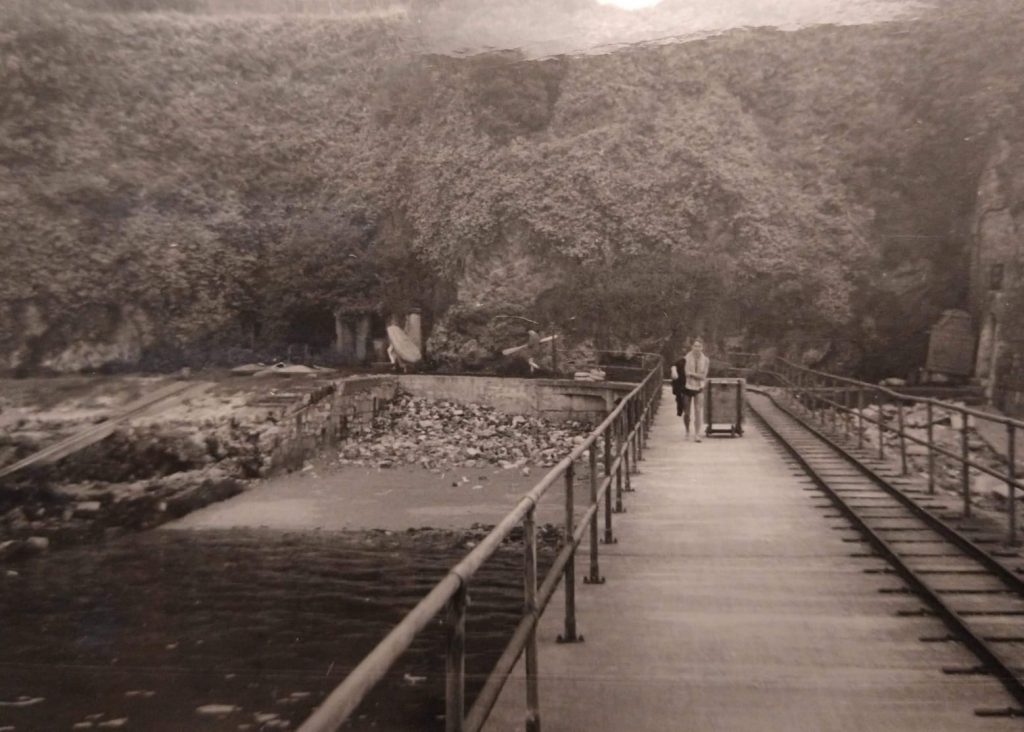
The Island would have looked quite different for the first Casmateers. Although the buildings would have been in relatively good order, there was around 1200 tons of rubble left over from the military demolitions on the Island. This needed to be broken up and moved. Although the military did return to do some of the urgent work and Naval recruits from HMS Raleigh and Drake also provided works parties throughout the years, a significant amount of work needed to be done by the Casemateers under the direction of the Warden and Stan Goodman, the Chairman of the Drake’s Island Committee. The steps by the Governors House leading up to the Barracks was still a ramp at this stage. Although the Casemateers could use their casemate how they wished there were initially no facilities. Power was by Generator, the electric cable wasn’t laid until 1969, and there was no connection to the Casemates in any case. In later years the clubs could pay to be connected. Similarly there was no running water for the first season although a supply pipe was laid in 1964.
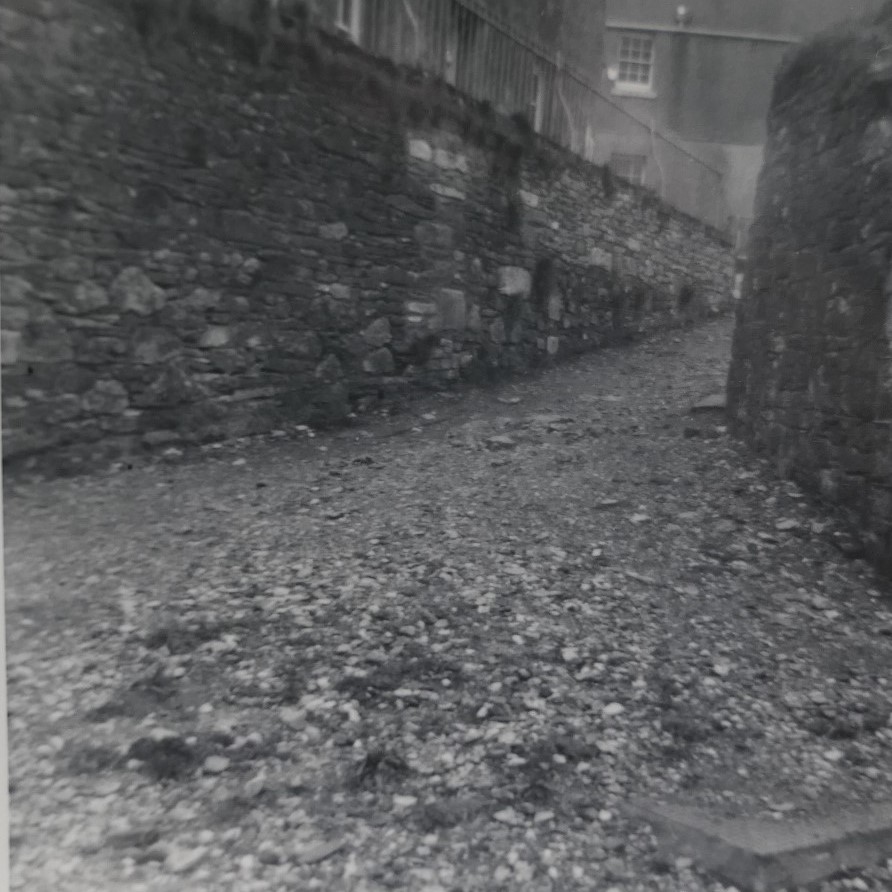
The original ramp prior to the paved steps being installed 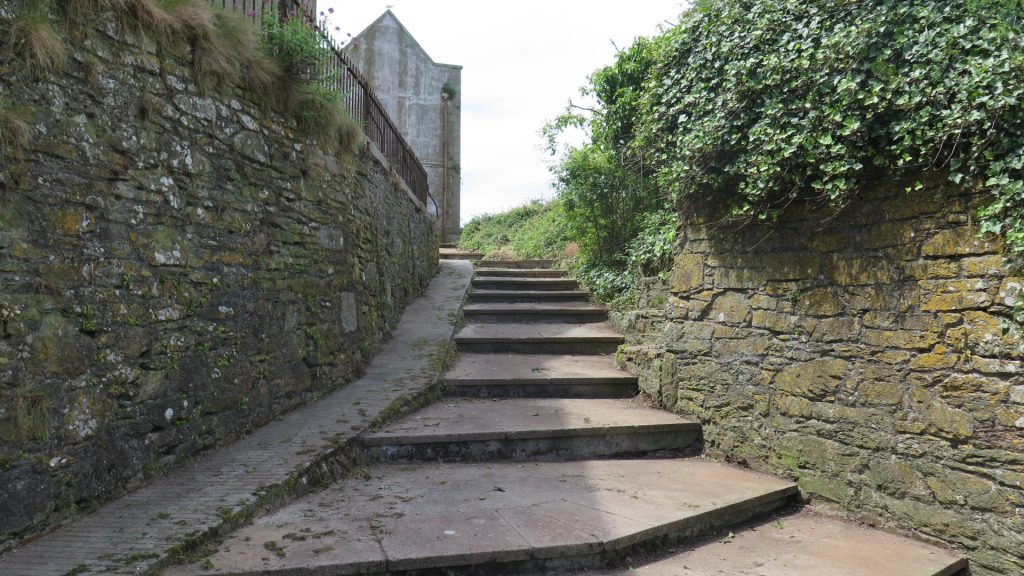
The steps replaced the ramp around 1970
Both Stan Goodman and the first couple of Wardens, Steve Bennett and Phil Kemp were supportive of the Casemateers. They both allowed and encouraged the Casemateers to use the Adventure Centre equipment and take advantage of the Instructors that weren’t being used by on the courses. However in later years, especially as the Centre grew and there were more students and courses, some Wardens took the view that it was an unnecessary burden on the Island resources and were less keen to let the Casemateers have such a free rein. Amongst the first Casemateers were a group from Honicknowle School and their HONSAC (Honicknowle Sailing and Adventure Club), others included Crownhill School, St Augustine’s (which I think was a church group), a Save the Children Group, the 9th Plymouth Scout Group, a YMCA group and the Dolphin Group although there would have been many more over the years. The groups could run their own courses and a number ran the Duke of Edinburgh Award scheme through to Gold level for their groups.
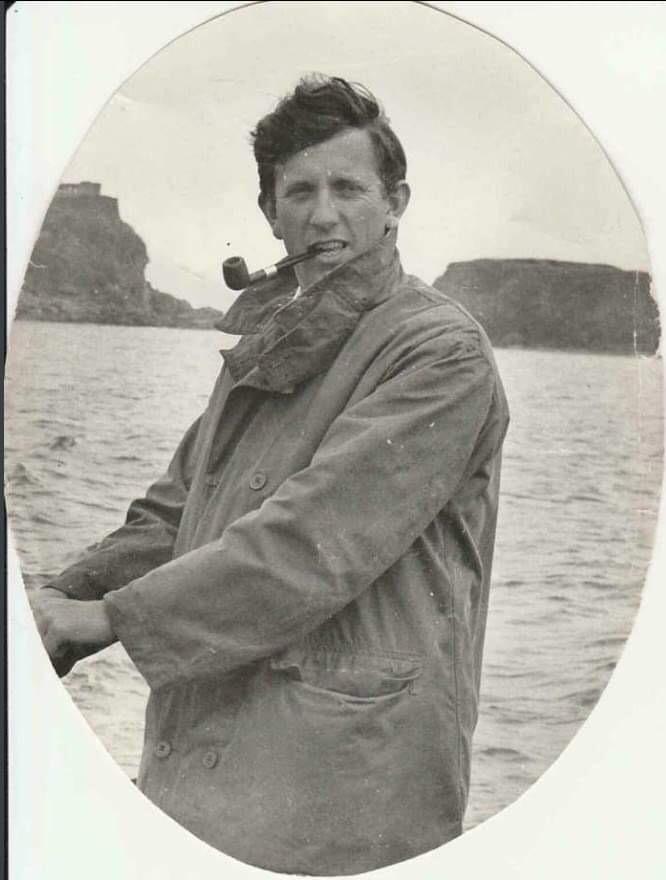
The following are some of the Caemateers personal memories from those times. I have put the personal memories in quotes and only added a few comments for context.
Mike Smith was part of the HONSAC group and took part in Duke of Edinburgh award expeditions. “I was very lucky to have attended Honicknowle Secondary School between 1962′-67′. Our passage to the island always started at the combined schools boatyard at Richmond Walk which was owned by Jack Clements. Ben Lyon (a teacher at the school and founder of HONSAC) used to keep his sailing boats there and as well as building canvas kayaks at the school we used to construct them at the boatyard. Ben also ran a night school at Prince Rock for refurbishing & building boats, this was one of my activities during my bronze Duke of Edinburgh Award eventually getting my gold award”.
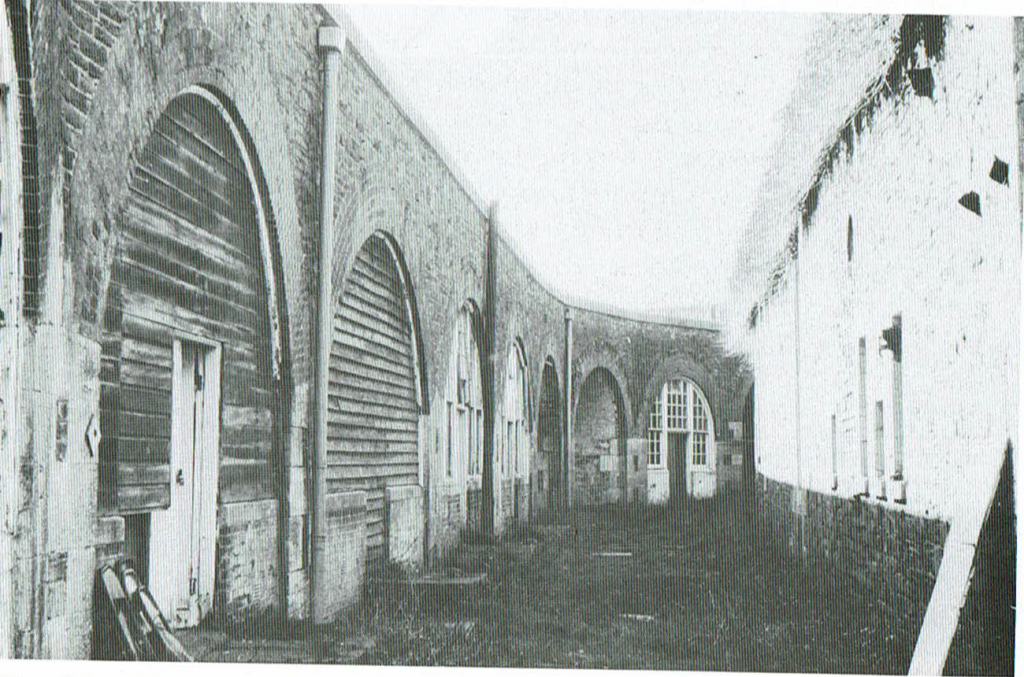
“We used to take supplies and sail through Devils Point’s dodgy current and tides to the island. Our school owned the first casemate on the east side of the island. I was very lucky that all the building and home comforts in the casemate had been installed and completed by previous pupils and their teacher. The casemate had running water, beds, sofas, kitchen and a steel wood burner for heating. We had no electricity, for lighting we used paraffin Tilley Lamps. It was a great place & we use to stay there for weeks on end. During our stays in the casemate with the fire alight it was very cosy but when not there we used to have a problem with damp & a continual dusting of powder through the brick jointing. Girls were not allowed to stay on the island but we had many in our group who use to take part in all the activities”. A number of the Drake’s Island Committee had somewhat old fashioned views on mixing girls and boys. One of the Committee minutes records a complaint that the Island was becoming a Snoggery – for younger readers snogging was a term used back in the day for the passionate attempts at kissing.
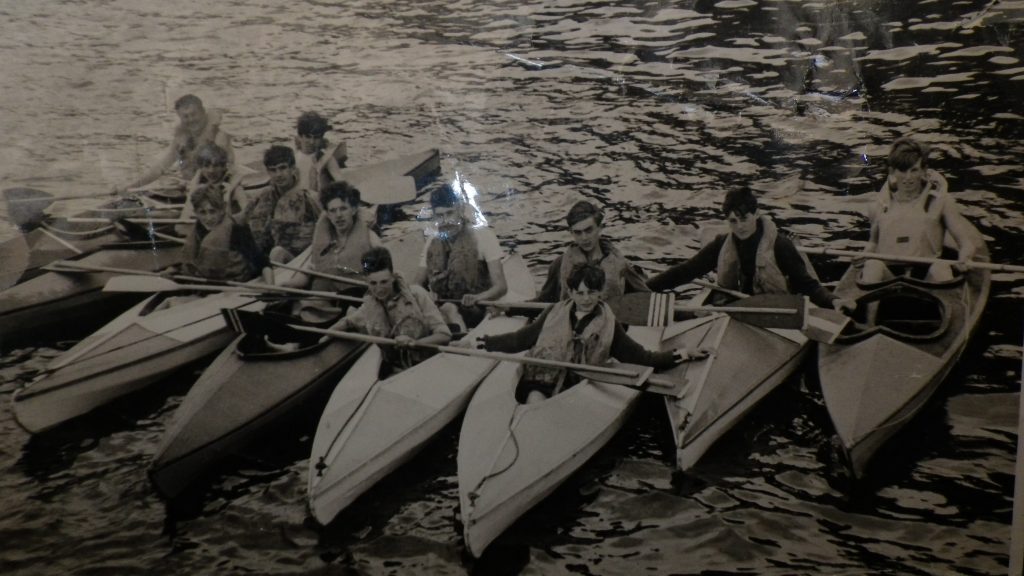
“In the early days Steve Bennett was the warden and proficient in both Kayaking and Abseiling. We used to abseil down three areas one being at the main climbing cliff, the second below the old crane that is beside where the sail loft is now. The third being on the right hand side wall as you exit from the main tunnel at the east end. I abseiled down in front of the Duke of Edinburgh”. That would have been in 1967 when Prince Philip visited the Island.
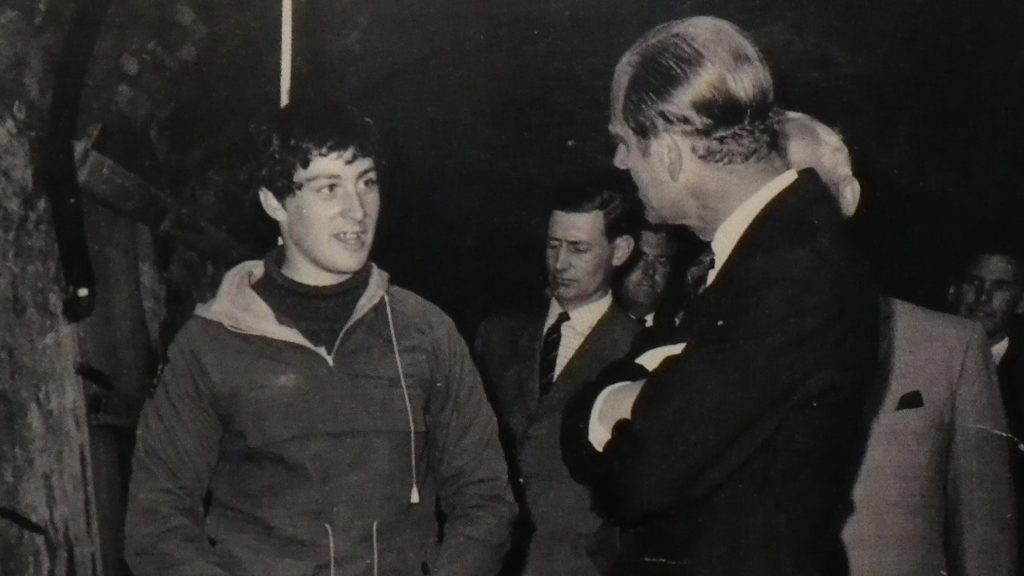
“Steve was an excellent climbing instructor who made sure you knew all the knots and you had practice in belaying someone down the cliff and attaching yourself to the anchor point. The usual routine was to abseil down and then start climbing at notice while being belayed, when being half way up the instruction was to dangle on the rope and hope the person belaying did his job on the safety rope. The experience of abseiling for me was a bit uncomfortable because at that time the rope you were being belayed on went into the karabiner & then over your shoulder which if you were big like me it used to cause a lot of friction on your shoulder. Today’s version is for the rope going through the karabiner then held by your side, a lot easier. Steve was also excellent as a Kayak instructor. After initial training we went on a Duke of Edinburgh Bronze expedition, 15 miles in total up the Tamar to Halton Quay. I’ve got great memories of our first trip where we learnt how not to load a kayak with non-essential gear like, according to Steve, you don’t need tea towels you can use your underpants!! Our efforts at first being in a double kayak was noisy with our paddles slamming together because of no decent timing. Money being very short in those days we relied on 10d a day for food and after having the luxury of a pasty bought for us by Steve at Saltash passage we then went on to Halton Quay. In the evening we had to make do with scrumping apples while the rest went up to the pub at St. Dominick. I think we ate too many – bad guts for a few days!!” For any younger readers in the old pre decimal days there were 12d or old pence to a shilling. A shilling being 5p in today’s money. Allowing for inflation that 10d is the equivalent to approximately 90p today.
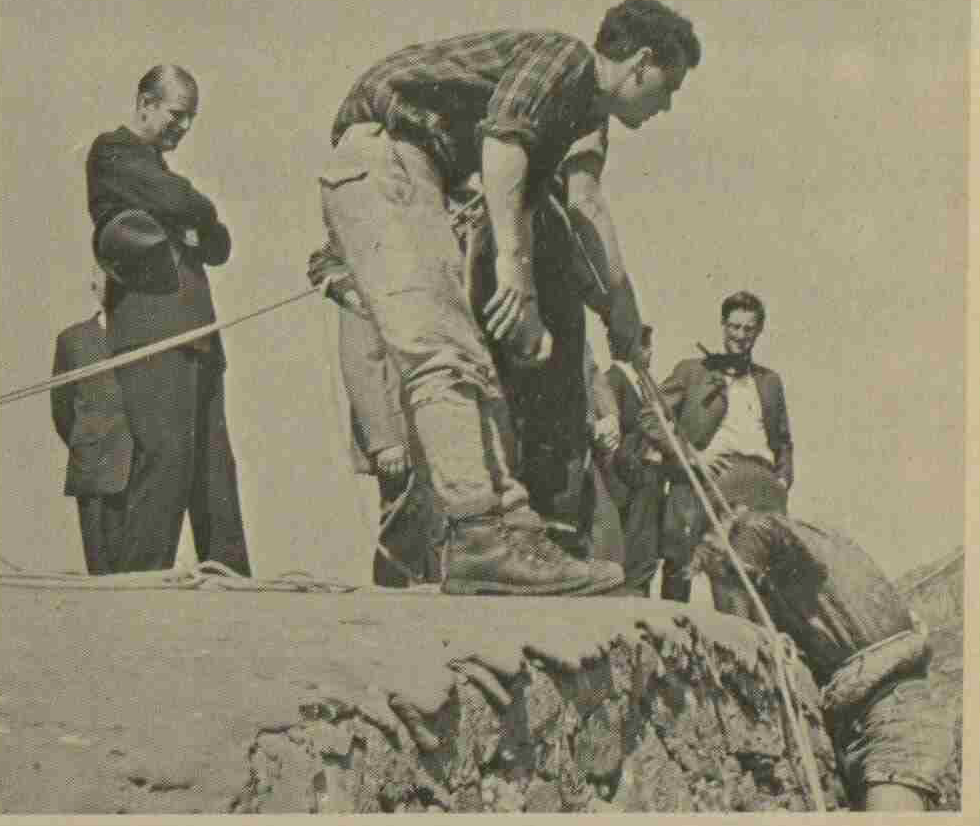
Prince Philip watching a rock climbing activity off the back of the Island. 
The Climbing Wall at the back of the Island today
“There were always social interactions with other casemates. We had camp fires, tunnel searches and visits to the gym, which was held in one of the main chambers. I can remember a pommel horse and weights in that gym, but had to put up with the rampant damp conditions. On the island it was also great to share the dinghies and go sailing. I think during the time we were there the sail loft was built and can remember Mirrors, Whalers, Cadets and Bosuns being used. We learnt to sail from members of the Dolphin Club who were housed in the main block. My favourite time sailing was when me and one of the HONSAC girls won a race out in a Bosun dinghy, the highlight being when we gibbed the last buoy we took on a lot of water but just managed to cross the line with a lot of bailing. There was always tales of ghosts usually when you were trying to get to sleep at night. The white lady springs to mind and always pranks to make you nervous. The main tunnel used to have supports built into the sides where people use to hide behind & wait till you pass & scare the life out of you”. The ghost stories were made up by the Adventure Centre staff. Popular were tales of French Prisoners who died building the Casemates. The truth was at that time, 1861-1871 when the Casemates were being built we weren’t at War and had no French prisoners. The Casemates were actually built by Hubbard’s, a local building firm based in Stonehouse. As for other ghosts I have no evidence through researching the local newspapers, records or diaries or have any personal experience of any although a local medium believes there are spirits on the Island. The Island does run spirit tours with the medium and they will be available when restrictions ease.

“The second warden during my time was Philip Kemp who along with his wife & dog were very popular at the time. Mr Kemp used to try and expand the curriculum for people on courses on the island, also for people with learning difficulties”. You can follow the link to a vide0 from the 1960’s here https://player.bfi.org.uk/free/film/watch-special-needs-children-in-plymouth-drakes-island-adventure-holiday-1969-online
“The Kemp’s dog I think it was a Jack Russell fell over a part of the cliff on the island & as a result had paralysed back legs, then I remember someone building a trolley for the back legs to enable the dog to walk. There was a tuck shop where you could buy all sorts of tins of food. There was some really big tins in there as well I think for functions. A good while after Mr Kemp left the tuck shop was left unattended & a lot of the tins were very rusty & labels had fallen off. So someone from the Dolphin group organised a raffle to clear the place. Can’t remember what we paid but those who were lucky had tins of peaches & vegetables still in good nick and if you were unlucky you had dog food!!”

Mike Putt was also a Casemateer. “I stayed there most weekends, sometimes a week with the 9th Plymouth Scout Group in the last casemate at the end of the terrace near a spiral staircase. We slept in hammocks and ate from the kitchen in the casemate. The big house was used by another club and had a tuck shop on lower floor. I spent lots of times trying to get down to the infamous level 3 of the tunnels. There was talk of a tunnel to Royal William Yard. We took short cuts to levels by shimmying up gun shoots used to bring ammo to guns. I learnt to climb, abseil and canoe there”. No tunnel has ever been found and it is almost certainly local myth. The Island staff especially spent a lot of time looking for another level of tunnels that supposedly led to the mainland, either the Hoe or Royal William Yard. They never turned up anything and the Island is only 400m long by 100m wide so not an extensive area to search. There is no evidence from military surveys or records that a tunnel was ever built nor is there any evidence from financial records that one was built. All construction work was tendered out in the public domain, the Royal Engineers were deployed throughout the Empire and rarely used for works in the UK. Finally we know from records that the Island was always resupplied by boat so I’m afraid the story of a tunnel is in my opinion just that, a story.

Andy Bird, a Casemateer with the YMCA has also kindly shared his memories. “Having spent most weekends as a member of the YMCA casement and briefly as an island leader before work took me away from Plymouth I enjoyed a full experience in my mid to late teens on the island. I remember local character and Plymouth historian Stanley Goodman planting trees high on the south of the Island. Goodness knows if they survived I only remember having to dig holes for Mr. Goodman to take the glory of the planting!! Splendid fellow nevertheless”. The majority of the trees and vegetation came over as cuttings donated by the council. Fertiliser was used to help the cuttings take root on what was a mix of fossilised volcanic lava and Devonian limestone and they have indeed for the most part survived. The paving for the steps leading up to the Barracks was also donated by the Council during the 1960’s and 70’s.

“Although at the start of my time on the Island in the YMCA casemate the really heavy clearing work was already well under way, there was always plenty of clearing work to still be done. One particular item of interest and controversy was a scrap metal collection project. All Islanders were working together to collect as much scrap as possible to fill a large barge unfortunately a large portion of degaussing cable was chopped by enthusiastic volunteers much to the angst of the enraged Admiralty. Not personally guilty I am glad to say!” Degaussing gear was used by the Navy to demagnetise ships thus avoiding magnetic mines.

“At the YMCA casemate we were usually quite a small group but would work closely with others particularly the Save the Children youth club that had the two casemates at the far end often assisting with their leaders, Jack (I can’t remember the surname) and Ken Parker, two unsung heroes. Each year they would run a week long expedition canoeing and camping using a converted lifeboat for all the gear and safety boat. They would ask my friend Derek Hendy and myself to help out which we gladly did. Still amazes me how helpful and cooperative people were back then, perhaps because of a more relaxed health and safety attitude and less insurance risk aversion. For instance Calstock allowing us to camp on their football field and Lord Boyd allowing us to camp on his estate on the Lyner including the use of his swimming pool at his home, Ince Castle. His Lordship even taking time to personally see we had everything we needed and providing extra provisions. Just brilliant. As for visiting the Island, every opportunity I could go would be taken. Certainly almost every weekend and a good portion of holiday. I like to think I had a good relationship with the warden Phil Kemp and would have liked more activity time with them but I think we understood the importance of priority to paying course activity even though some of us Casemateers would be co-opted to help out from time to time. Nevertheless, we did get instruction and organised water sport day each year”.
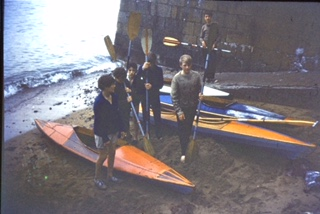
YMCA Canoeists 
“I was taught to sail but mainly in the whalers (more people in a boat) canoe and climb and occasionally we would visit climb sites on Dartmoor and practice on the Island climbing wall on the south cliff. Even practising casualty rescue with a “willing volunteer” strapped to the rescue stretcher. We never saw fear then although I do remember being perplexed at abseiling down over the casemate end of the tunnel, disconcerting when there was nowhere to bounce your feet. Freedom was abound, we felt trusted to actively make our own activity. Regularly I would spear fish or we would canoe around the Island or over to the Hoe for ice cream. All in all the island played a large part of my still formative years, many good relationships with people who like myself were not always, shall we say, from privileged sources. Apart from the activity element, relationships, diplomacy and teamwork were very influential. Health and safety, well it was the sixties. No climbing harnesses just a figure of eight piece of rope. No braking abseil systems just a rope around your shoulder that you controlled depending on how much rope burn you wanted to take. Was it a dangerous place to be? I guess it was, but I wouldn’t have, at the time, had it any other way. Perhaps we were not so cosseted and were risk more aware than credit can be given. Of Stanley Goodman, even though he could be controversial and never left the YMCA casemate without dirty dishes in the sink, once you got to know him I felt he was someone special and I feel privileged to have known him. In conclusion, things that are prominent in my memory, seeing Sir Francis Chichester arrive in Plymouth from his epic voyage. Seeing Phil Kemp’s yellow Rolls Royce parked in Mill Bay dock looking pristine and a few weeks later not so when the seagulls had redecorated it!! The wardens two dogs Lab and Jack Russell who unfortunately fell over a cliff and was paralysed but happily scampered everywhere in an improvised chariot attached to its hind quarters and could still catch rats which were plentiful above all happy memories of good exercise, good friends and a sense of real purpose”.

Very many thanks to Andy and both Mike’s for sharing their memories of the Island back in the day from a Casemateers point of view. This social history is so important in preserving the heritage of the Island. I found them fascinating and I hope you have enjoyed them as well. Next week some more Island memories, this time from some of the Instructors who not only worked on the Island but lived there including over the Winter months
